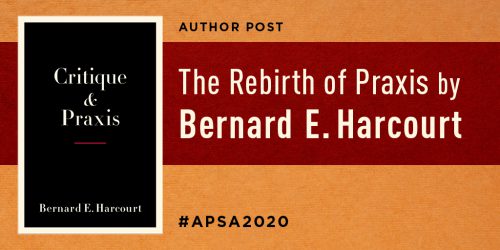An excerpt from Theos Bernard, the White Lama: Tibet, Yoga, and American Religious Life, by Paul G. Hackett
The following is an excerpt from the preface to Theos Bernard, the White Lama: Tibet, Yoga, and American Religious Life, by Paul G. Hackett.
“How few ever think that there will be one around to check up on them.”— Theos Bernard
Before he had even set foot on his home soil on his return from Tibet in the fall of 1937, Theos Bernard declared to a reporter for London’s Daily Mail, “I am the first White Lama—the first Westerner ever to live as priest in a Tibetan monastery, the first man from the outside world to be initiated into Buddhists’ mysteries hidden even from many native lamas themselves.”
Over the weeks and months that followed, Theos’s account of his life and the events that befell him in Tibet would grow greater and greater in proportion, coming to nearly obliterate any trace of his actual activities. By March of the following year, having called in a few favors back home, he arranged an alumnus lecture at the University of Arizona, and arriving in Tucson, he pulled out all the stops.
When the curtains parted before a packed house, all in attendance saw Theos Bernard, religion scholar, explorer, and mystic, seated in a chair on a dais in the middle of the stage, next to a movie projector and surrounded by ritual artifacts and Tibetan robes. “Come with me,” he invited the audience, “in a flight in the Clipper Ship of the imagination from San Francisco across the vast Pacific . . . into the heart of Asia, the Land of the Lama—Tibet!” and with a carefully practiced grandiose style, Theos Bernard, “the White Lama,” unfolded his story, explaining how he had fulfilled an ancient Tibetan prophecy and become “the first white man ever to live in the lamaseries and cities of Tibet . . . initiated into the age-old religious rites of Tibetan Buddhism [and] . . . accepted by the Tibetans as one of them”—or so he claimed.
As the evening progressed, Theos provided even more details of his “recognition” by the Tibetans as a reincarnation of the eighth-century master Padmasambhava. He told of his dark retreat “in the dungeons of the Potala Palace” where midway through his internment, Buddhist monks descending into the black depths of those catacombs were astonished to find him bathed in a “white light” where none could possibly exist, thereby confirming his fulfillment of the prophecy of the coming of the “white lama,” a man who would herald and bring about the spread of the truths of Buddhism to the Western world.
With each of Theos’s descriptions, the assembled audience was held rapt with attention to every detail. His old grade school principal, Mary Price—who had made the journey from Tombstone to Tucson to hear him speak—recounted that throughout his lecture, Theos walked in his robes through the aisles of the auditorium that was “absolutely quiet except for Theos talking and the sound of your neighbor breathing.” It was “the most emotionally packed thing and best talk” she had ever heard in her life—so emotional, she recalled, that Theos was a long time coming down from the stage, surrounded by many people, including four or five of his old law school professors.
After the evening had wound to a close, Theos joined his mother, brothers, and Mary Price for the long drive back to his old home of Tombstone. As the car traveled along the dusty road south toward the Mexican border, Mary asked Theos, privately, if what he had said on stage was actually true. “Every word,” was his response.
While Theos Bernard had gone to Tibet, had met various lamas, and had participated in rituals there, beyond those simple facts, little more of what he said on that spring evening, or afterward, had the slightest ring of truth to it. Nonetheless, from the practical standpoint of what he was attempting to accomplish, that lecture in Arizona was a success. Theos received endorsements sufficient enough to secure a contract for a major lecture tour from a public relations firm in New York, and while the details were being arranged, returned to California to spend time with his father, Glen. There, with Glen’s help, he began to refine a public persona that would capitalize on the prevailing moods and interests in 1930s America and to no small degree, establish a personal mythology that would serve as a foundation for his life in the years to come.
What actually happened to Theos Bernard over his forty years can only be pieced together from the fragments left in his wake when he disappeared in the fall of 1947. In the following months and years, his friends and family struggled to make sense of his life as well as their own role in it, some with greater or lesser success—even passing on this obligation to others. The end result was a scattering of primary and secondary source documents across North America, from Arizona to New York and California to Florida, as well as in parts of India and Tibet, each locale holding different pieces of a puzzle offering glimpses into his life. This book is the result of my attempts to collect those pieces and put together that puzzle. This is the story of Theos Bernard.


